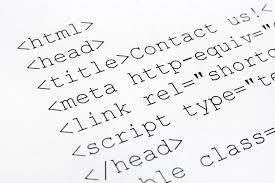
Basics of web design with HTML
Web designing is the process of creating websites to be displayed over World Wide Web. Various technologies are available to write these pages, but the most widely accepted standard which provides the basis of web design is HTML. HTML stands for hyper-text markup language. Web pages are written in HTML which can be understood by web browsers. It is a case insensitive language and can be easily written in any text editor (eg: notepad). The file is saved with a ".html" or ".htm" extension. Here are some additional basics from http://graemewinchester.co.uk to give you a better understanding of basic web design.
HTML is used to structure a web page. The plain text is "marked up" using HTML tags (<,>) which provide information to the browsers about the text enclosed. Within these tags, HTML elements are present. Usually elements have an opening as well as a closing tag, which encloses the text in between. For example, a paragraph element is opened as <p> and closed as </p>. In between these tags, the paragraph content is present. Some elements have only an opening tag. These are called empty tags, since they have no content within them. For example, <br> is used to create a line break.
Every HTML document begins with an <html> tag and is delimited by an ending </html> tag. A tag can have attributes inside it, for example, HTML tag can contain "dir" attribute to give direction to the browser to render the text. The HTML document can be divided into "head" and "body", described by their own tags. The <head> tag may include various other tags to manage the document's content. They can be used to simply add a title to web page, or to even provide style to the document. The <body> tag contains the content to be displayed on web page. For example:<html><head><title>A simple web page</title></head><body> this is a simple web page with only a single line of text</body></html>
The above example when created in a text editor and saved as ".html" will create a web page. The page will have given title and content. So now you know the basics of HTML and can begin tinkering with creating your own unique web pages.

